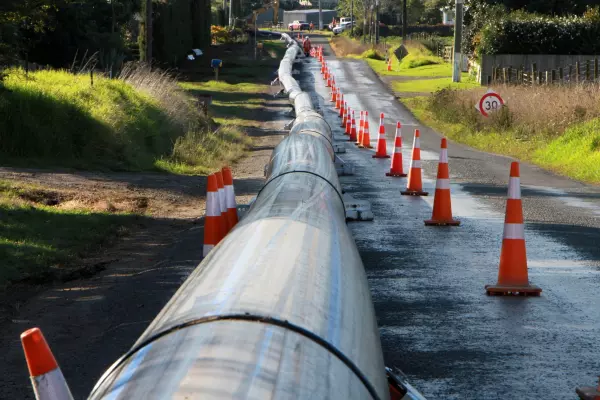Some are calling Auckland property a bull market after its performance in 2020 and expect the typical doubling in house prices over seven years as another 10-year cycle plays out.
Last year was a strong deposit on that with Auckland house prices up 18 percent.
Could that doubling happen?
If the historical pattern continues, the answer is yes. Record lower interest rates including debt servicing and deposit rates, legacy issues from a long period of under-building, and New Zealand attracting favour internationally are powerful forces.
Servicing interest payments on a mortgage when lending rates are around 2.5 percent is a more viable option than renting if you can get together a deposit.
It is worthwhile working through some of the broader numbers though to give an idea where they end up if Auckland house prices doubled.
A doubling in prices from the end of 2019 would mean a median sale price in Auckland above $1,750,000 by 2026.
The income gap
Assuming median household income in Auckland repeats the growth rate of the past 20 years of just under 4 percent, the ratio of house prices to income in Auckland would rise from 10 times median income to just under 13.5.
A 20 percent deposit on the median house price would go from $177,000 at the end of 2019 to $350,000 in 2026. It has gone from $177,000 to $208,000 in the past year.
You need to be saving more than $20,000 a year just to be standing still and keeping up. Little wonder people want to jump in now.
A 20 percent deposit on the median house would rise from just under two years' annual household income to 2.7 times annual income. That ratio was around one, 20 years ago.
Using the household median income, a 20 percent deposit and 80 percent borrowing would imply a debt-to-income ratio just under 11 on the median house price in 2026.
Priced out
Of course, no one will be borrowing at 11 times income. You generally can go to around six-times income. The 11 figure just illustrate that lots of people will be priced out of the market.
Around 60 percent of new loan commitments in Auckland to first home buyers are already at a debt-to-income level greater than five.
Around 50 percent of other owner-occupier loan commitments is at a debt-to-income threshold greater than five. Those figures are already high, and pushing higher would create financial stability risks.
The value of a lower quartile property would be more than $1.3 million.
A 20 percent deposit on a lower quartile house would be above $260,000. A million-dollar mortgage is just over $900 a week in principal and interest over 30 years at an incredibly low interest rate of 2.5 per cent.
Meanwhile, average weekly earnings in Auckland are currently $1,200 per week. Extrapolating at 4 percent growth would get that to $1,500 by 2026.
Now do rents
Auckland rents have typically risen around one-third the pace of house prices. That has resulted in falling residential investment yields.
Either rents surge, placing pressure on households' budgets and creating a political bunfight, or residential investment property yields will continue to fall, well below 3 percent.
The Auckland property market has typically screamed off into the sunset by itself and outperformed when the median sale price across NZ hits around 80 percent of Auckland's.
Auckland’s premium is less extreme at that gap, but the rest of NZ has played catch-up when national median prices have fallen to 60 percent of those in Auckland.
Right now, the national median sale price is just above 70 per cent of Auckland, which is the historical gap between the two. The reading is broadly neutral.
Defying gravity
We have seen the Auckland market defy gravity before. It may do again.
But the result is a bunch of eye-popping numbers.
The saving grace, or exception, is the ability to service a loan.
National household debt servicing (interest payments) is around 6.5 percent of disposable income and falling rapidly as more debt is refinanced at cheaper interest rates. That ratio was around 9 percent five years ago. It was double digit between 2005 and 2011 and some real pain appeared. Households can carry more debt at low levels of interest rates.
There is the risk that interest rates move up, but banks have been using much higher rates than current borrowing rates — around 6-to-6.5 percent, with some even higher — to assess borrowers’ ability to service a loan.
Economists, including myself, had a howler calling the property market in 2020. We picked a fall but the bulls appear to have the upper hoof.
Not healthy
A robust property market is healthy, but the current market is getting more unhealthy across too many metrics.
The Reserve Bank has acted by tightening loan-to-value restrictions.
The government will be forced to change the tax system and they should give the Reserve Bank debt-to-income limits as a macro-prudential tool.
Market forces will come into play too, including tightening credit and affordability.
A real surprise could be how quickly the talk of housing shortages turn into a surfeit of supply, with net migration now minimal and national population growth going from a trend of 90,000 per year to 35,000 very soon.
With borders to remain shut for a while yet, that takes away a lot of demand. Rents will be key to watch over the coming months.














